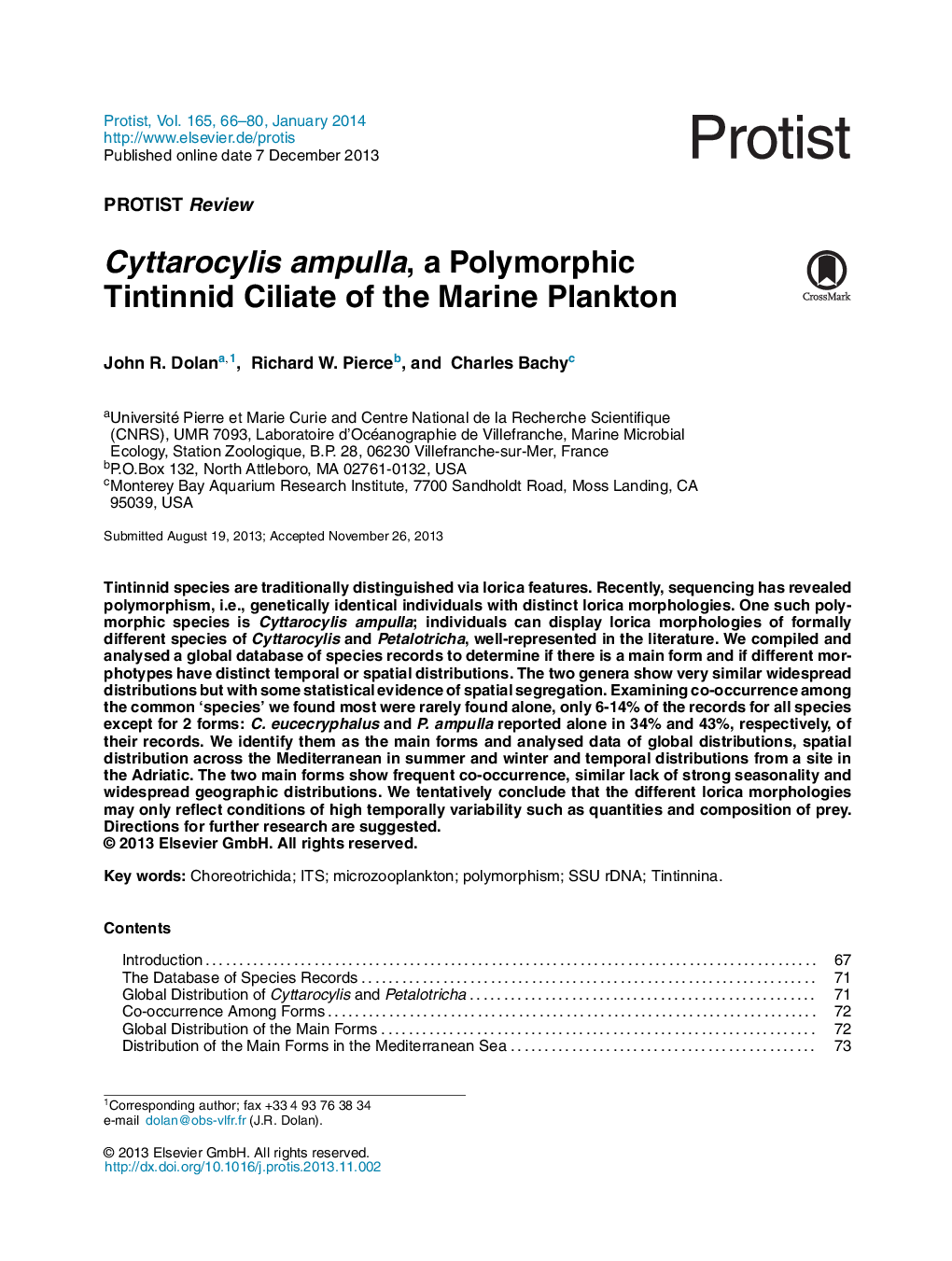| Article ID | Journal | Published Year | Pages | File Type |
|---|---|---|---|---|
| 10879003 | Protist | 2014 | 15 Pages |
Abstract
Tintinnid species are traditionally distinguished via lorica features. Recently, sequencing has revealed polymorphism, i.e., genetically identical individuals with distinct lorica morphologies. One such polymorphic species is Cyttarocylis ampulla; individuals can display lorica morphologies of formally different species of Cyttarocylis and Petalotricha, well-represented in the literature. We compiled and analysed a global database of species records to determine if there is a main form and if different morphotypes have distinct temporal or spatial distributions. The two genera show very similar widespread distributions but with some statistical evidence of spatial segregation. Examining co-occurrence among the common 'species' we found most were rarely found alone, only 6-14% of the records for all species except for 2 forms: C. eucecryphalus and P. ampulla reported alone in 34% and 43%, respectively, of their records. We identify them as the main forms and analysed data of global distributions, spatial distribution across the Mediterranean in summer and winter and temporal distributions from a site in the Adriatic. The two main forms show frequent co-occurrence, similar lack of strong seasonality and widespread geographic distributions. We tentatively conclude that the different lorica morphologies may only reflect conditions of high temporally variability such as quantities and composition of prey. Directions for further research are suggested.
Related Topics
Life Sciences
Agricultural and Biological Sciences
Agricultural and Biological Sciences (General)
Authors
John R. Dolan, Richard W. Pierce, Charles Bachy,
